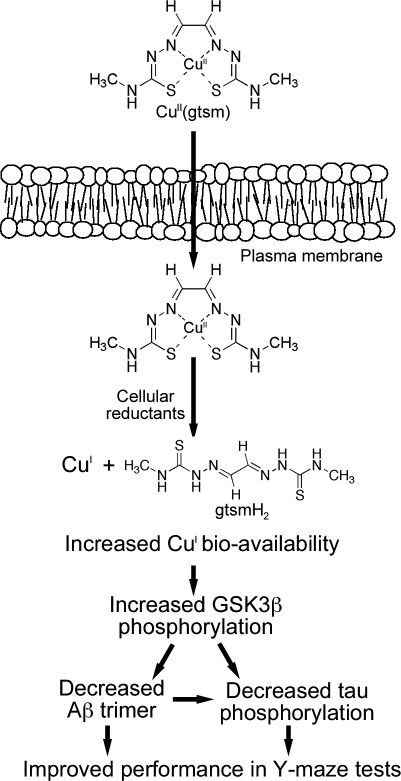Fig. 6.
Schematic overview of proposed mechanism by which CuII(gtsm) decreases Aβ oligomer burden (trimers) and tau phosphorylation in the brains of AD mice. Cell-permeable CuII(gtsm) dissociates in the presence of intracellular reductants to release CuI and increase Cu bioavailability, thereby activating cell signaling pathways that lead to decreased Aβ trimer levels, decreased tau phosphorylation, and improved performance of AD mice in the Y-maze test for spatial learning and memory.

